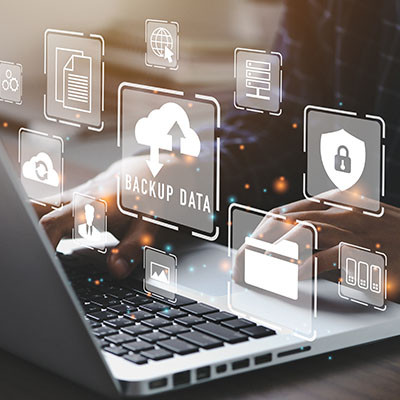Network Synergy Blog
Perhaps predictably, the word “insure” has roots that tie it closely to “ensure,” as it is meant to ensure a level of security after some form of loss. Nowadays, that loss often pertains to data, making cyber insurance an extremely valuable investment for the modern business to make.
However, in order to obtain this kind of insurance, businesses commonly need to meet some basic requirements. Let’s go over some of these requirements now.
In business, there are always issues that need to be met. Often, there are so many that finding which ones to give priority is a chore all in itself. Choosing the best path forward depends on the situation, so when you are considering your organization’s disaster recovery you have to take into account every troubling situation your business can encounter. This month let’s go through some of the most prevalent disasters that a business can face.
Tape backup has been used for a long time, and it was once the most prominent solution for data backup out there. Nowadays, it’s not used much at all, mostly in favor of better and more convenient solutions. However, there has been a slight resurgence in tape backup, so we want to look at why some companies might still use it, despite its flaws.
Cybersecurity is important. Scroll through a few pages of our blog and you’ll see article after article talking about threats and ways to make yourself and your business less vulnerable to cyberthreats. As an IT professional, however, I’d be so much happier if the state of the world didn’t require such a massive effort just to protect oneself and we could just talk about cool stuff you can do with modern technology all the time!
But alas, strong cybersecurity is crucial to virtually any organization, and it’s becoming even more important by the month.
We often discuss data backup and disaster recovery on our blog, and you may even be familiar with some of the terms and practices we throw around. Today, we want to take a closer look at the 3-2-1 rule and how it impacts your business’ ability to recover in the face of a disaster. Let’s dive in and see how the 3-2-1 rule can make or break your company’s data infrastructure.
When you suffer a data breach, you might wonder how you can possibly come back from such an event, especially if it leads to a network compromise. Can your business rebound effectively, and if so, what do you need to do to make sure that it doesn’t happen again? It all starts with understanding how much data you need to function, as well as how much downtime you can afford to suffer from.
We often think about disasters in the context that they completely destroy the office, rendering your business incapable of operations. However, this is only part of what is encompassed by the term “disaster,” and the whole picture is far more terrifying. Any disruption to your operations can be considered a disaster in its own right, so we wanted to take some time to go over what you should look out for with your disaster planning.
Insurance is a great asset, should you ever need it… including where your business technology is concerned. If you weren’t aware, there is a form of insurance—cyber insurance—that you can purchase in case your business suffers from a data breach.
Is this additional form of insurance worth the investment? Absolutely.
There are countless ways your organization could face down a disaster, whether it’s a high-profile natural disaster, a physical disaster, or a technology-related disaster. If you aren’t prepared to face the consequences, your business could falter in the face of such incidents. How can your business best prepare itself for all manners of disasters?
When we are talking about the continuity of your business, we typically use the colloquialism “disaster” for just about anything that could put the brakes on your business’ ability to do business. But what happens when that “disaster” is an actual disaster and threatens to derail your business completely? Today, we take a look at some disaster preparedness tips that can quite literally save your business from ruin.
Most business owners that rely on their IT have heard about managed It services. Many already subscribe to some form of outsourced IT service. It is one of the best ways to cut down your business’ operational costs while gaining value through the use of services that, if they were to be purchased intermittently, would cost a lot more. Today, we thought we’d list some of the most important variables you should consider if you are looking to choose a managed IT services provider.
Having a comprehensive data backup and recovery strategy in place can absolutely save your business. This means it’s extremely important. Unfortunately, too many businesses don’t consider their backup and recovery systems until it is too late. Let’s unwrap what makes a successful backup and recovery platform work, and how to get one for your business.
Know it or not, your business takes in and creates a lot of data. Most of this data, like most items and information, isn’t worth much. Some of it, however, is crucial to your business’ ability to operate. If a situation comes along where you are faced with the prospect of losing your data, it will be much better to have a backup plan in place than not.
When considering a continuity plan for your business, you need to consider some scenarios that may not ever happen. This is called risk management and it is the basis of keeping your business up and running regardless of the situations that it encounters. This month, we thought we would outline some of the variables that need to be addressed when creating a comprehensive business continuity plan.
How confident are you that your business could survive a data disaster of any size and scale, from a single misplaced file to a complete loss of your entire onsite infrastructure? Being prepared to recover from any version of events is key to your business’ success. Let’s discuss this concept, which is widely known as IT resilience.
Your data is vital for your organization’s continuity. Your data consists of everything from your company documents, accounting records, client contact information, prospects and leads, procedures, and everything else needed for you to keep operations running smoothly. That’s why all businesses need a solid backup solution that is monitored and tested regularly.
The Novel Coronavirus has made its way around the world and it has certainly changed the way a lot of businesses do things. Some businesses have put in some type of disaster recovery platform. This is basically a plan for returning to continuity after some type of disaster, but we are seeing that many business continuity plans were not broad enough to take on a worldwide pandemic. Sadly, many of these businesses won’t open again.




















